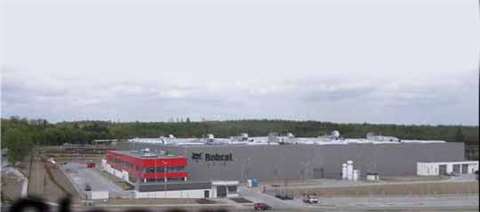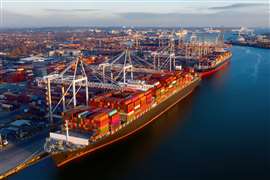Closer
18 March 2008

Bobcat's major new production plant in Dobris, the Czech Republic, which opened earlier this year, looks like many other construction equipment factories-if perhaps a little cleaner than most. But Bobcat is keen to emphasise that the 20000 m2 plant is more than just a new factory, it is emblematic of the company's new strategy.
This strategy is to increase the proportion of equipment developed and built regionally, with ultimately the goal being for 80% of all Bobcat's equipment to be built in the region where they will be sold, shifting away from using the US as the main production base for all equipment.
Scott Nelson, president of Bobcat Europe, says the decision was taken in 2005 to invest aggressively in Europe; “The vision is to source, design and build in Europe the majority of products we sell in this region.”
The 20000 m2 Dobris plant, located 35 km southwest of Prague, will, says Mr Nelson, “fabricate, weld, paint and assemble compact the European market. He says that this will also reduce lead times for customers - avoiding the 3 to 4 week delivery time from US plants - and increasingly allow the company to “build to order, not just in case.”
The Dobris plant will have an initial capacity of around 900 units a month, although he says this is well below the actual capacity of the plant, which he says will be sufficient for the next five years.
The drive towards local product will have a positive impact on other regions as well. It is possible, for example, that Bobcat telehandlers - currently built exclusively at the Point-Chateau facility in France (the Sambron plant acquired by Bobcat in 2000)-could well also be made in the US within five years. In Asia Pacific, meanwhile, Bobcat's Wujiang facility is currently looking at a new 6-7 t excavator that would be built specifically for China. (Bobcat's currently largest excavator is a 5 t model.)
At Dobris, meanwhile, work is underway to increase the range of machines being produced. The factory is currently working two shifts and employs just short of 400 production workers. Robot welding equipment carries out 85% of all welding in the plant and “a very high percentage” of fabrications are done in-house.
So far, three loader models are being built - the S100, S130 and, just starting now, the S175. Other models, including the 150, 160 and 185, will start production either later in 2007 or at the start of next year. The mini-excavator line can accommodate machines up to 3 t and currently makes the 319, 321 and 323 models.
Global effects
The Dobris plant will also benefit North American customers in that production capacity has been freed up at Bobcat's Gwinner and Bismarck facilities in North Dakota, where there is demand for increased production of large-frame loaders, mid- and large-sized mini-excavators, as well as the Toolcat utility machine.
The facility, which actually started production in July, represents an investment of almost US$32 million for Bobcat. Bobcat president Richard Pedtke says it represents a change in the mentality of the company, away from one in which the voice of the US customer was heard above all others; “Our factories now go beyond the ones in North Dakota-we are here in the European Union and also Asia Pacific. We are regionalising this business.”






